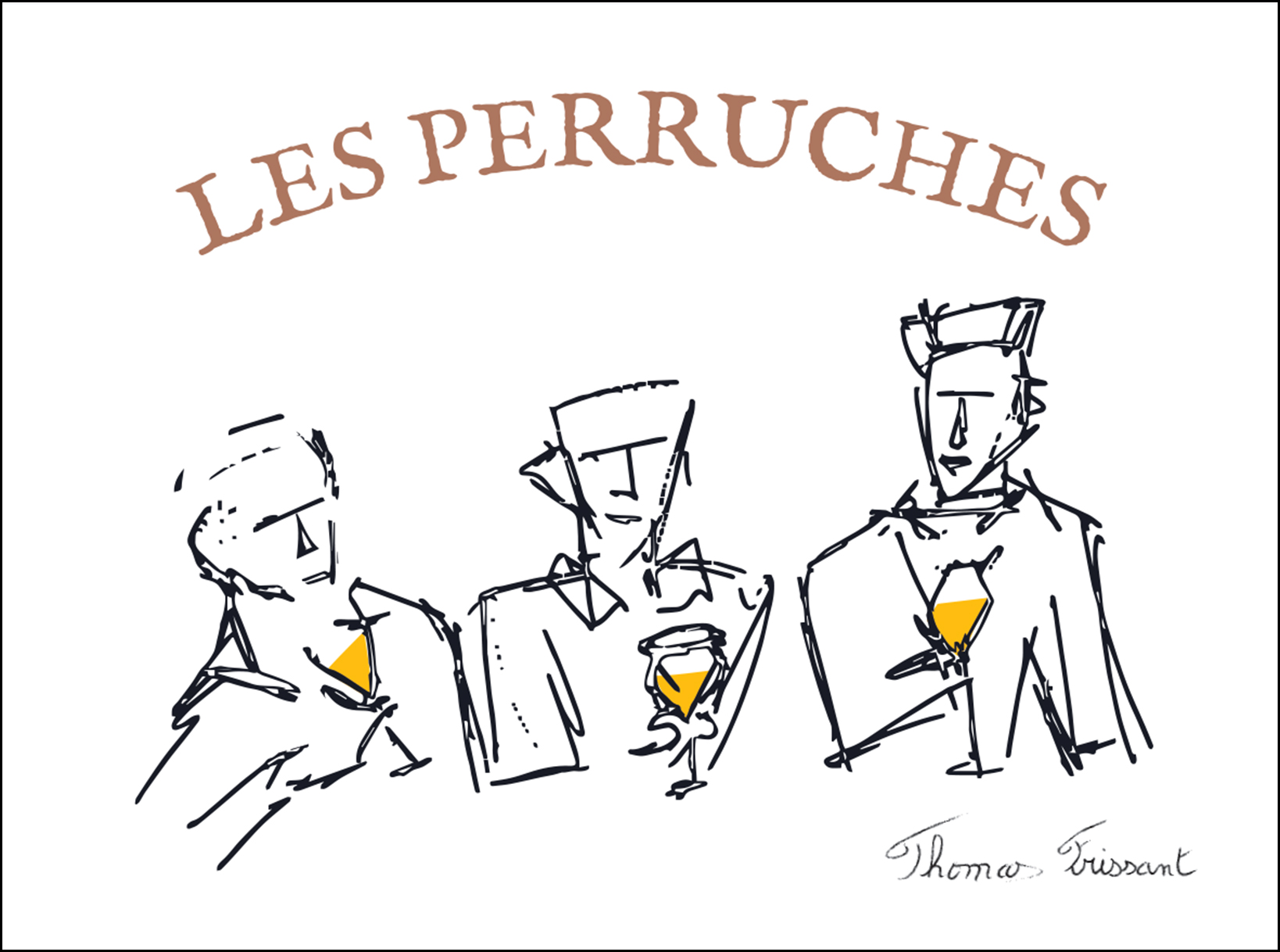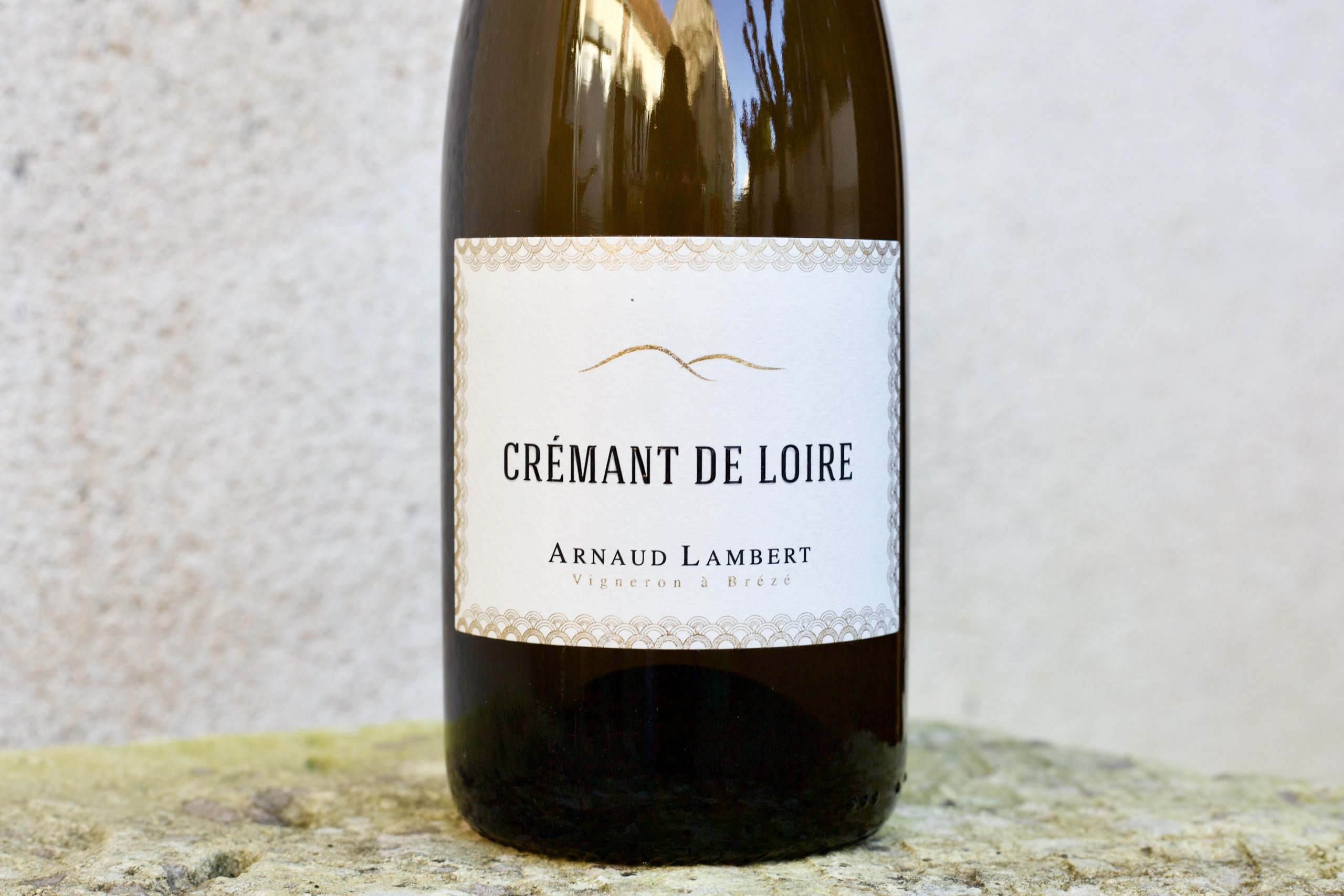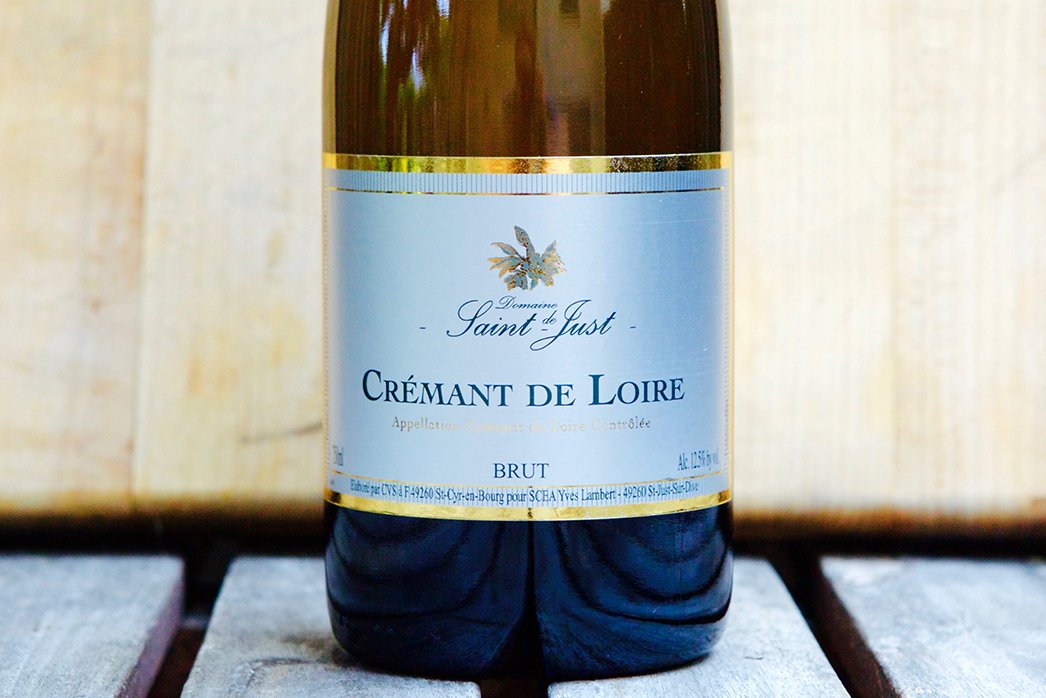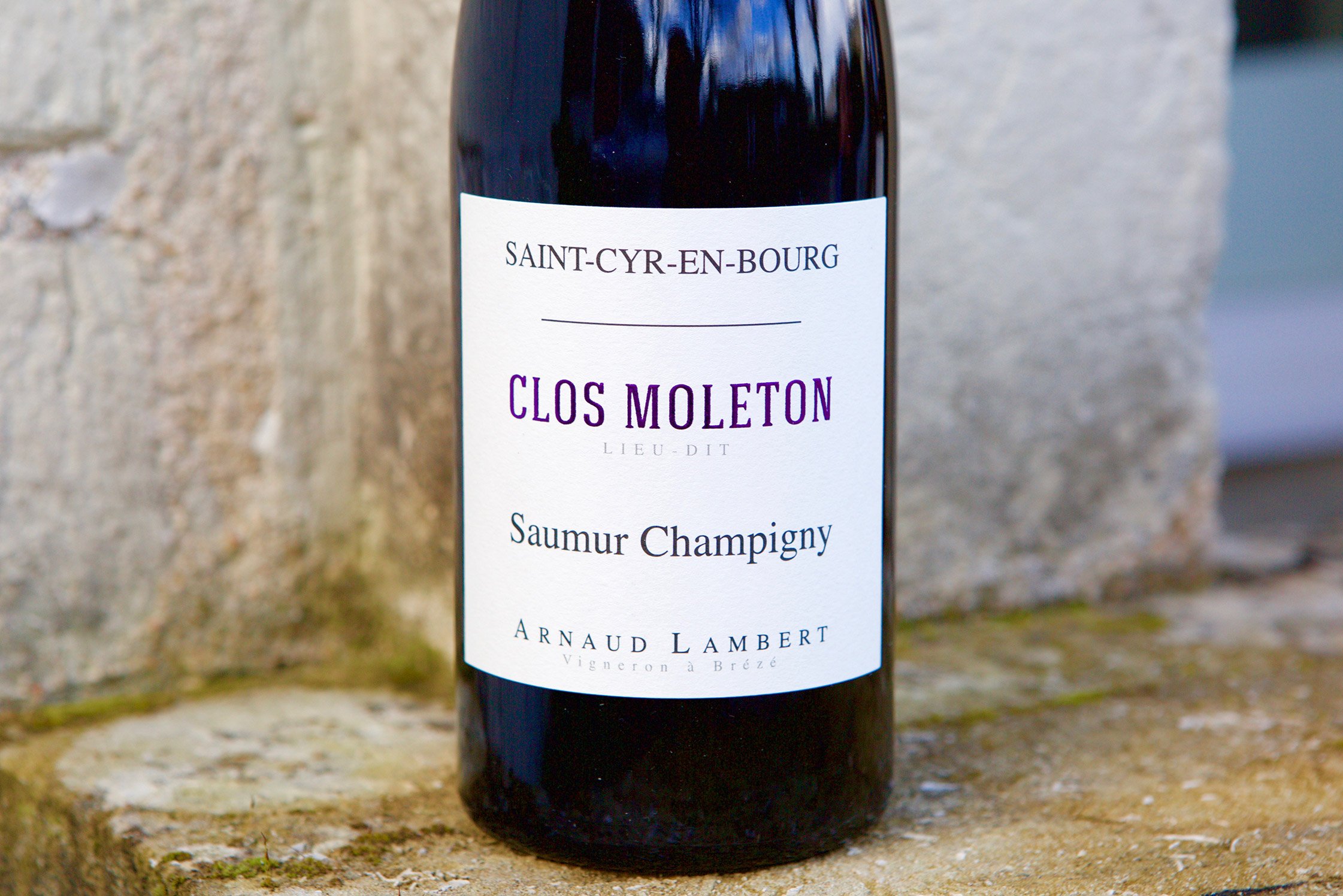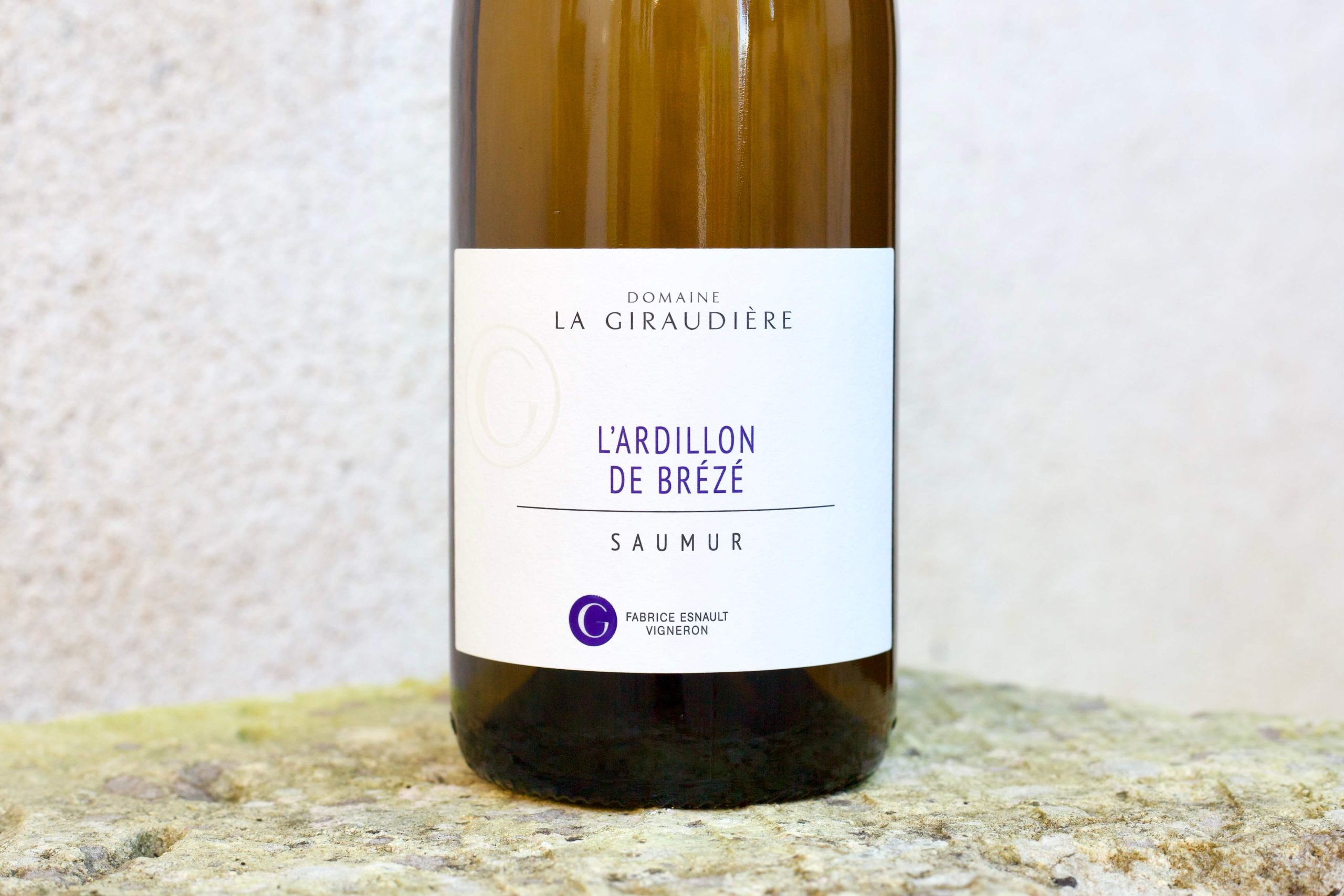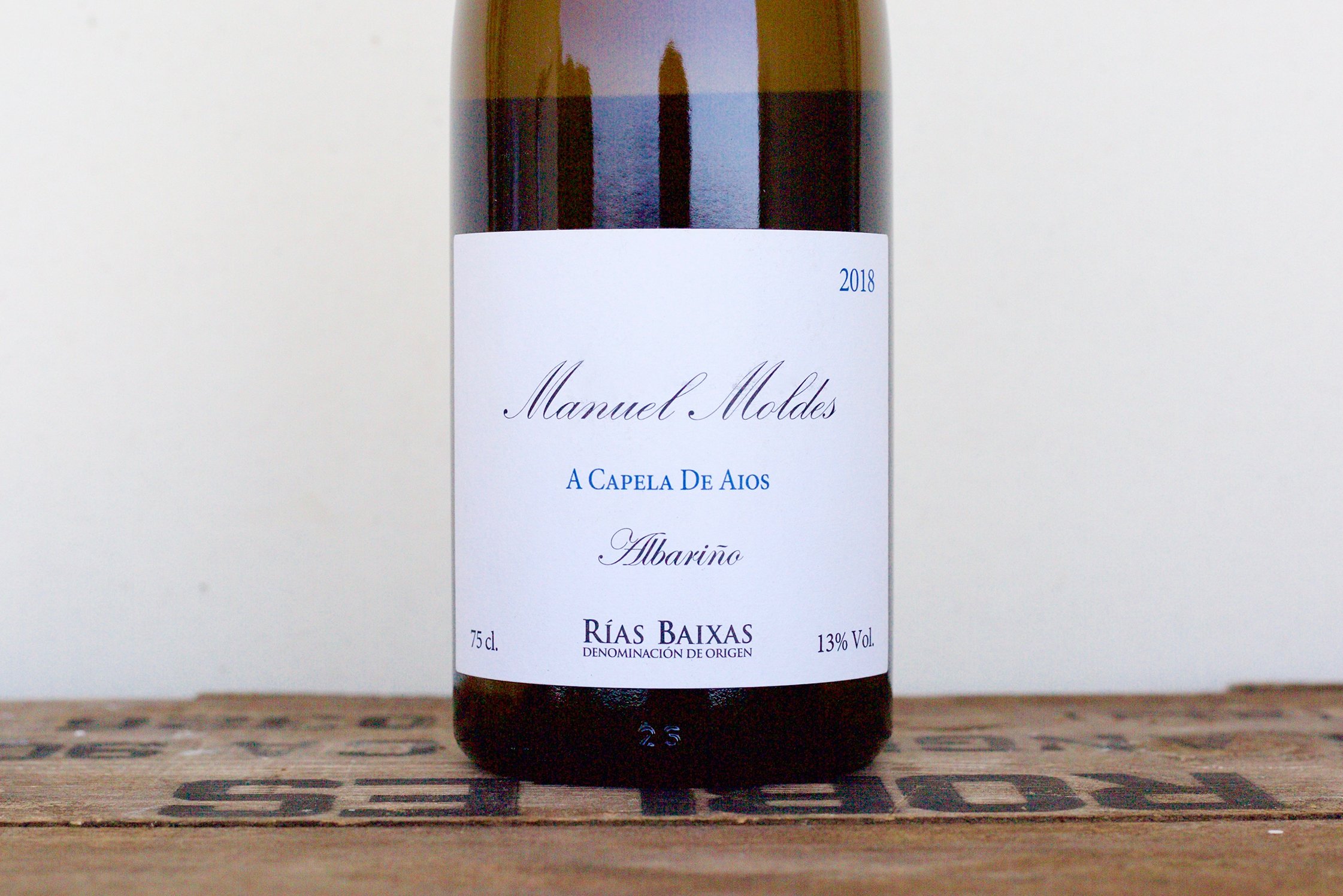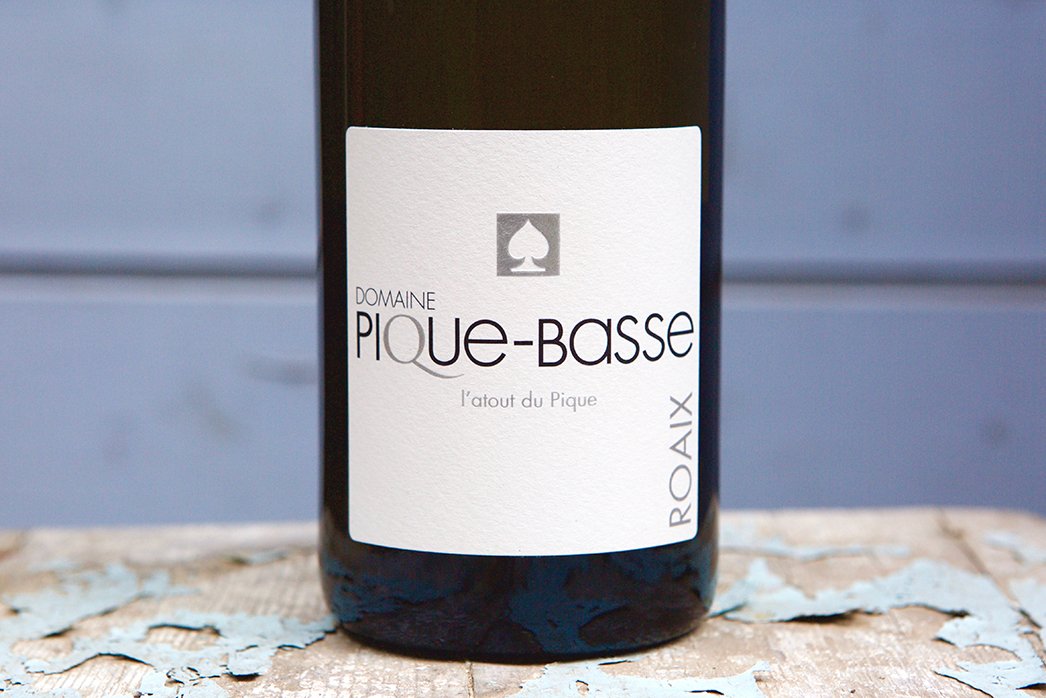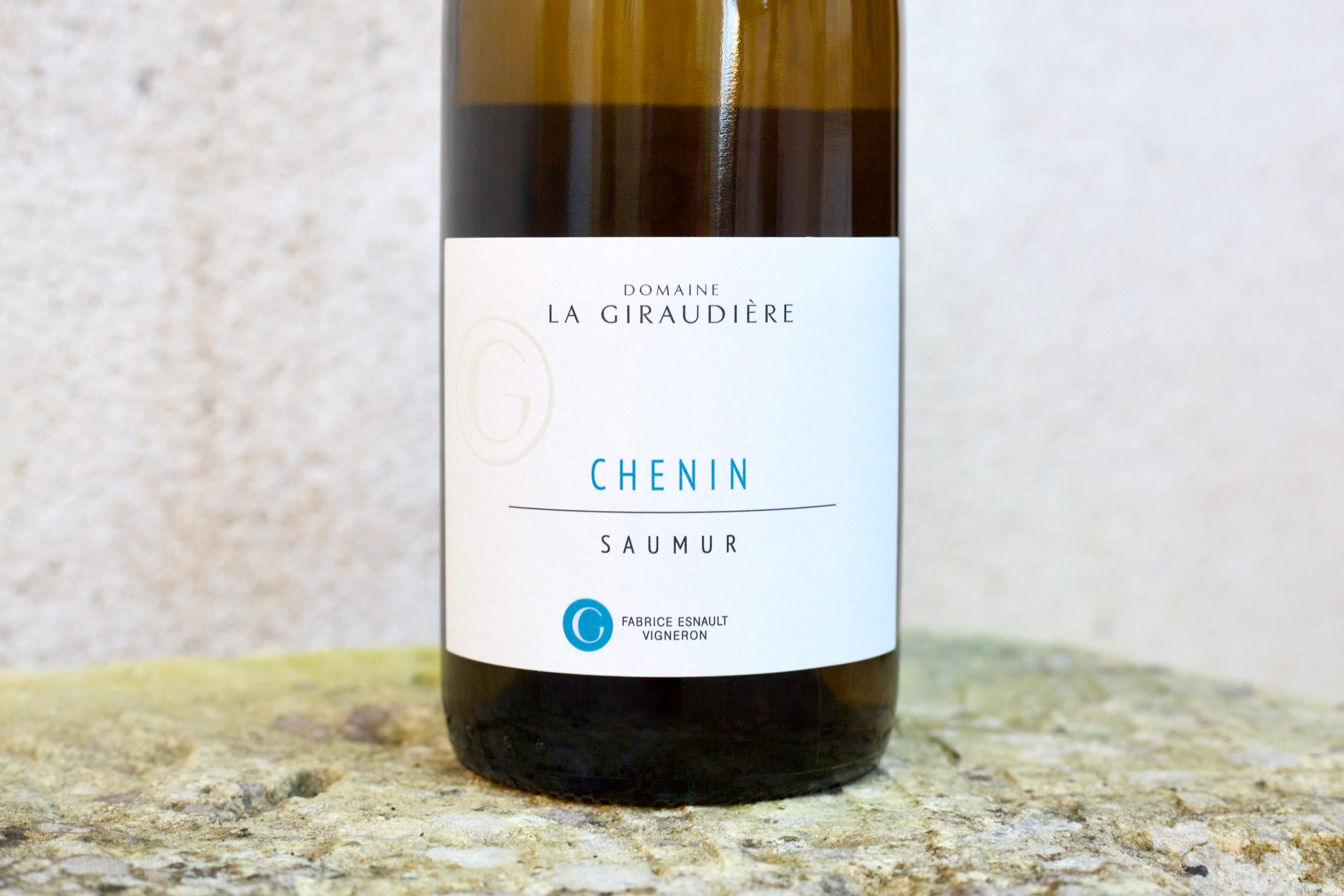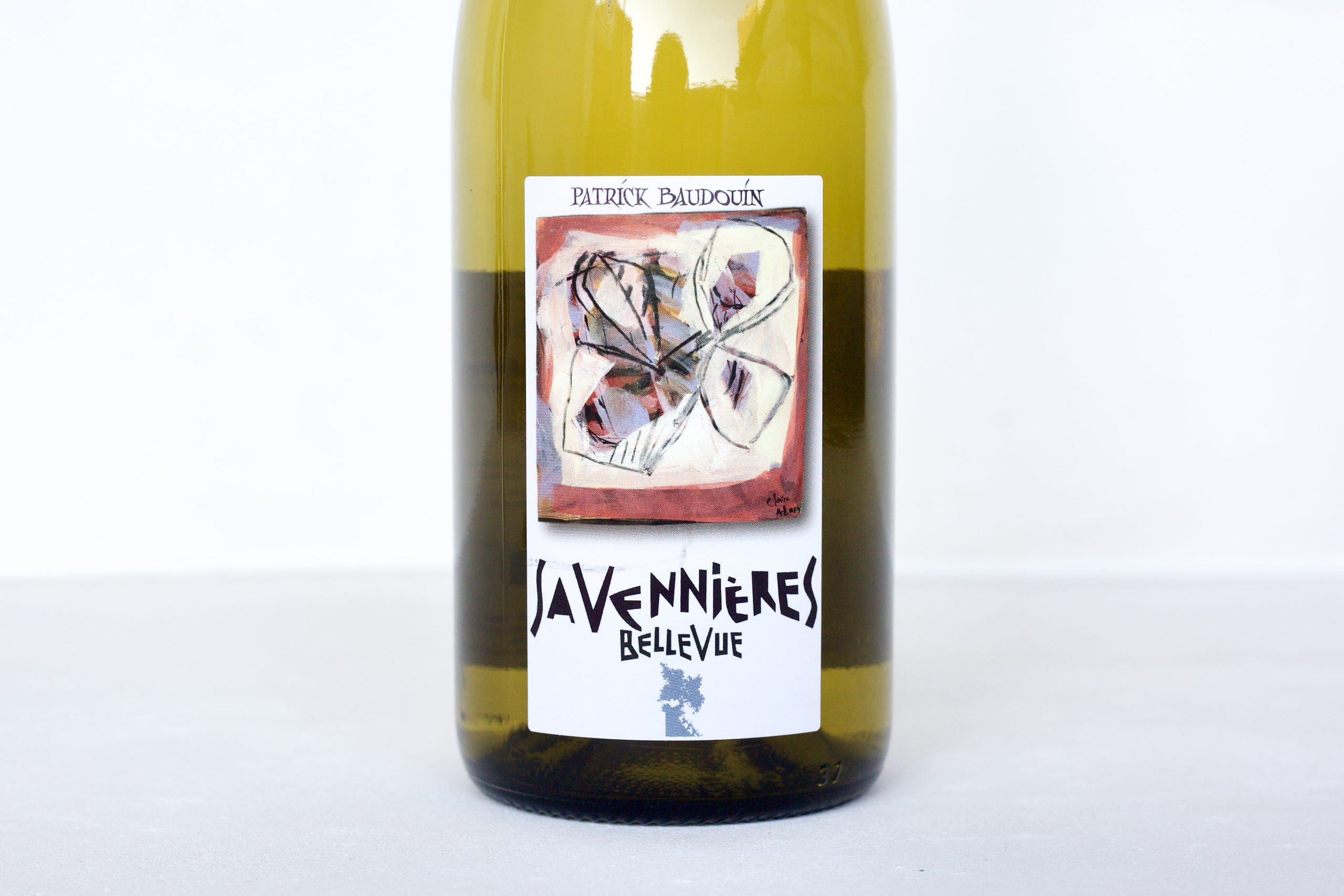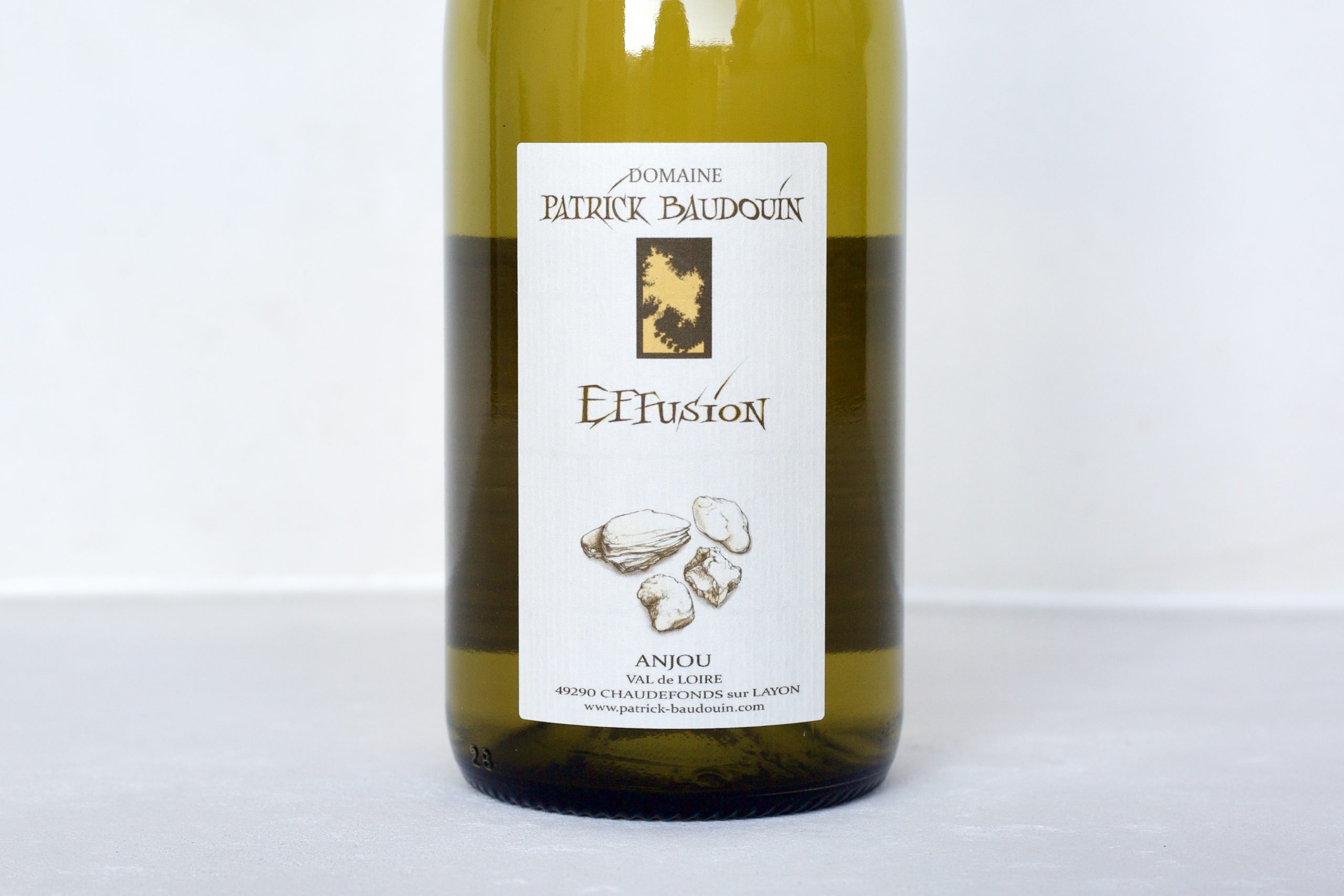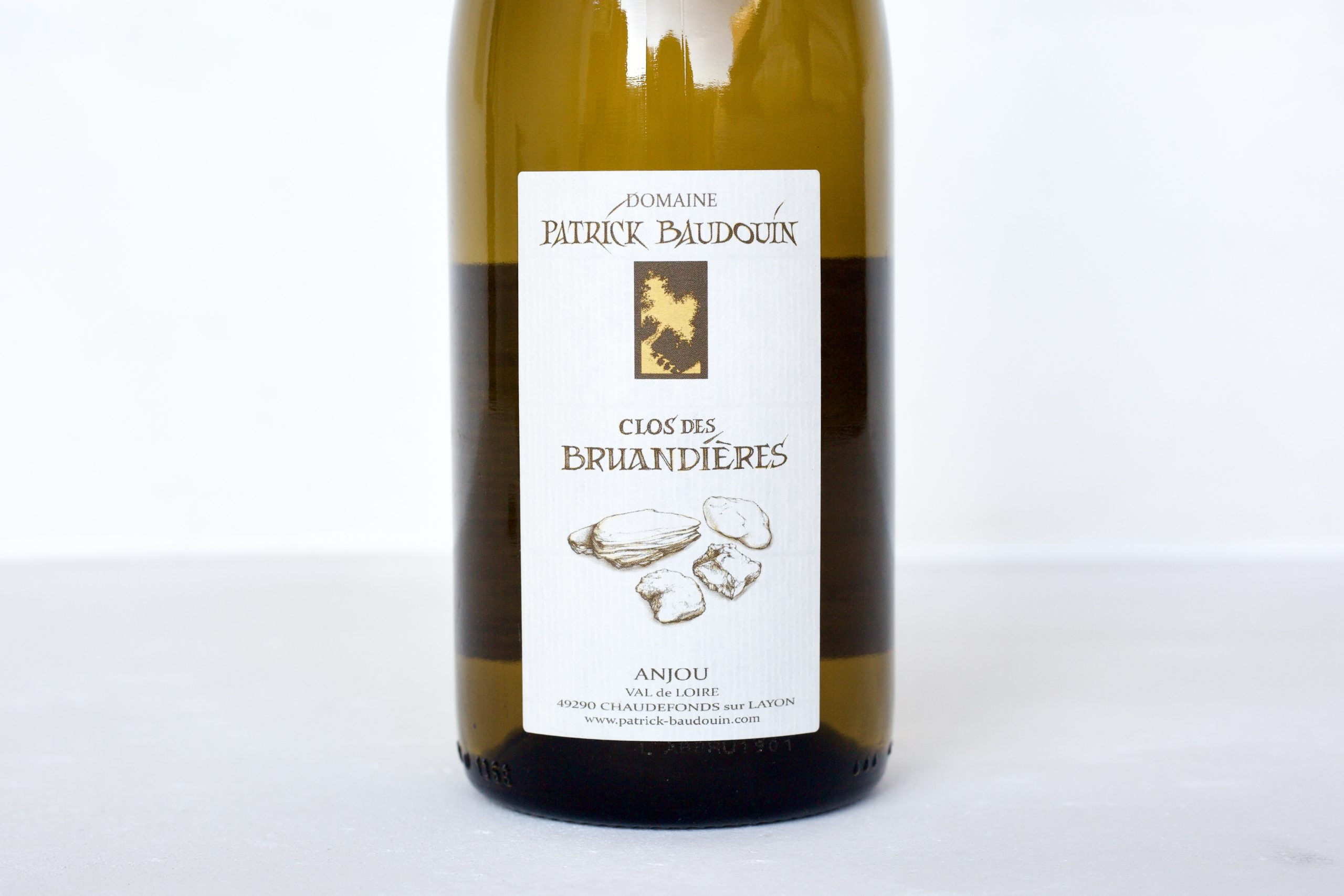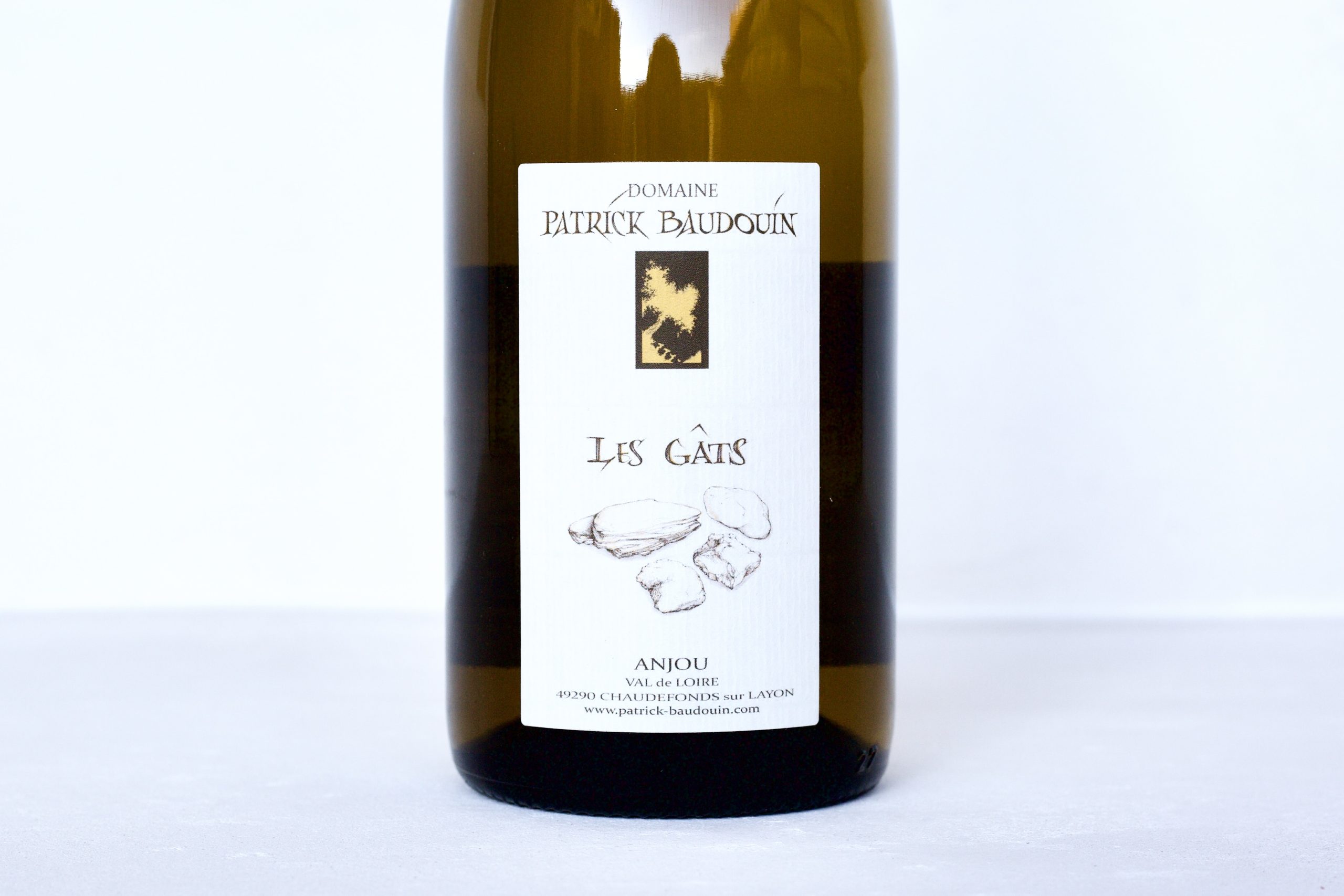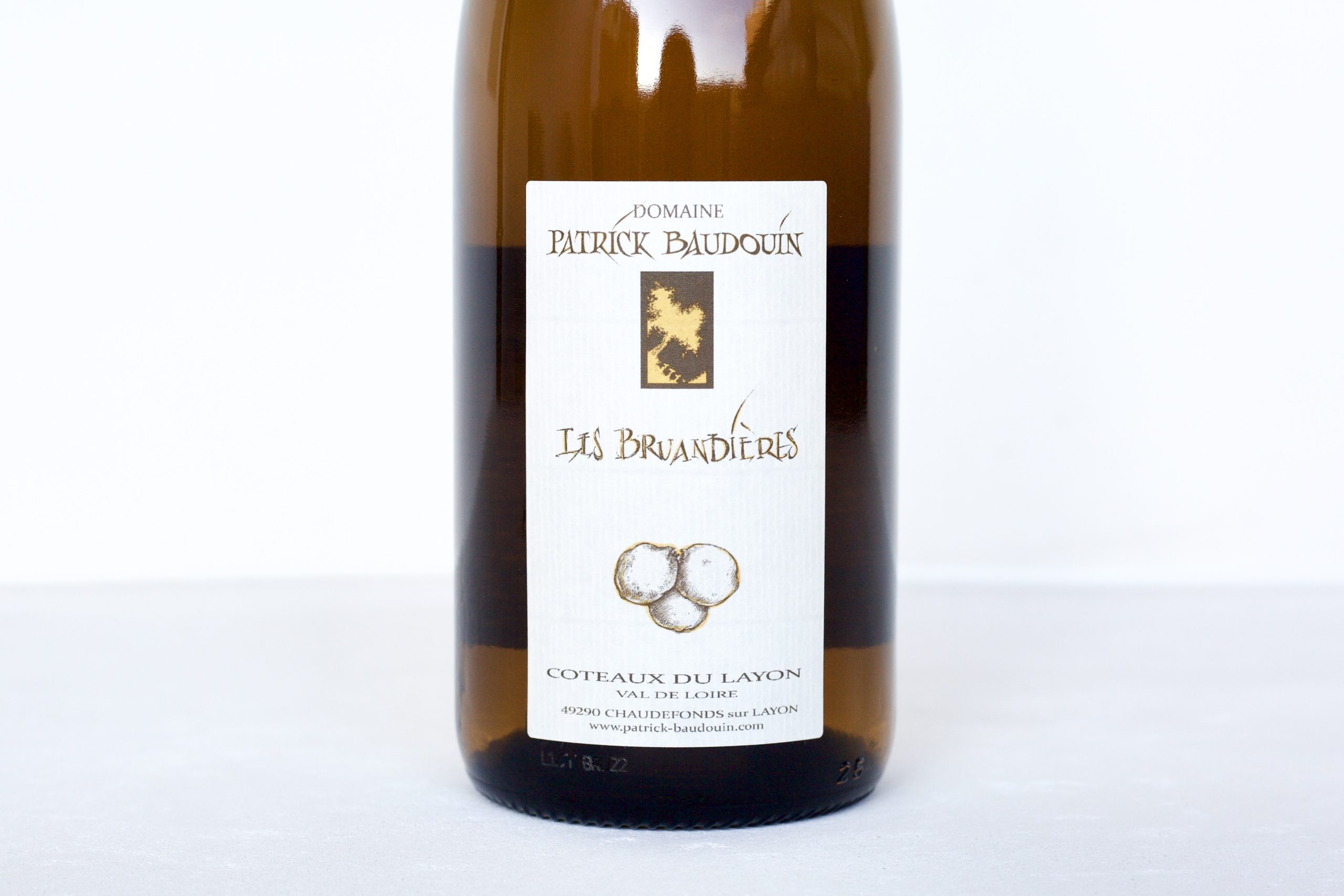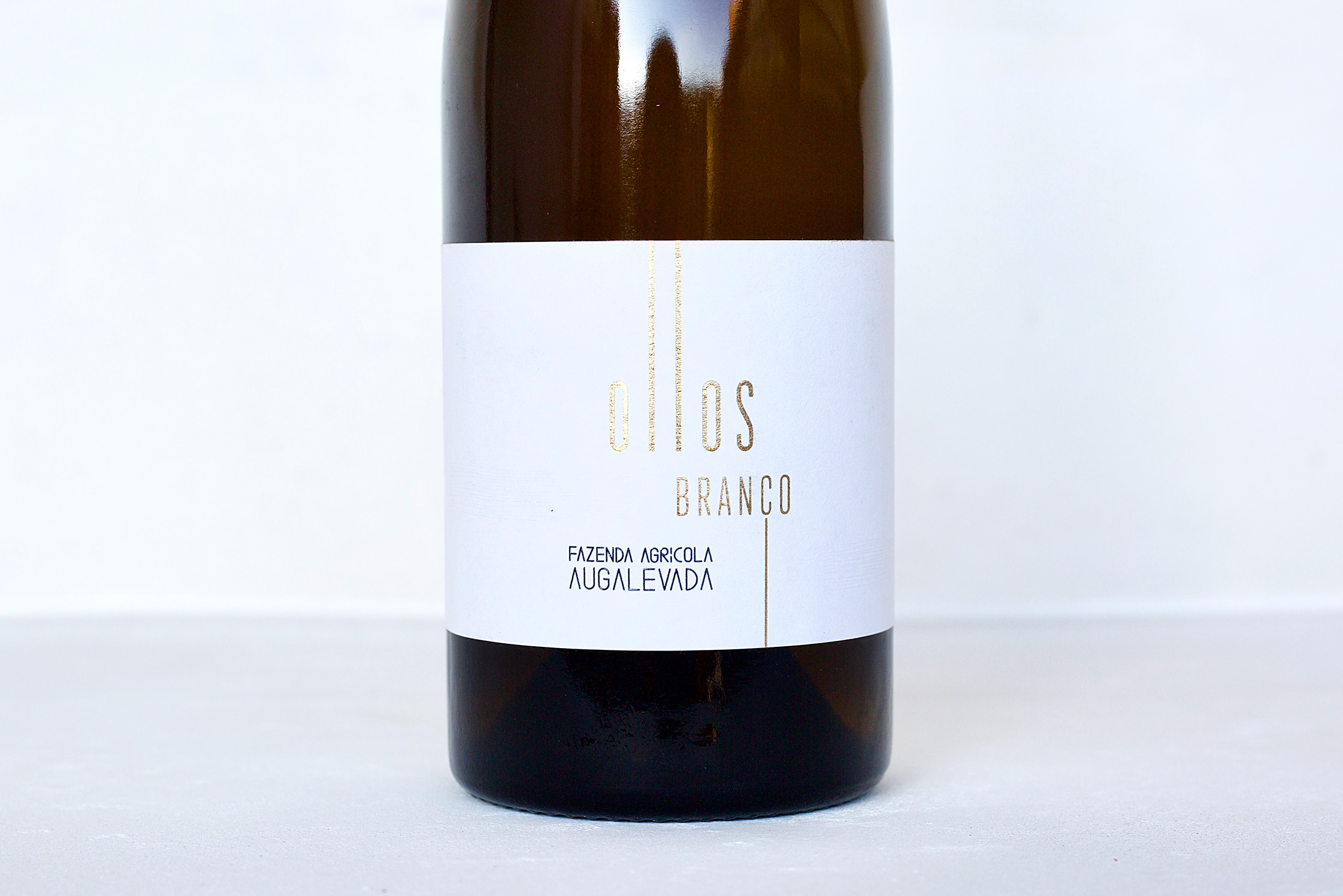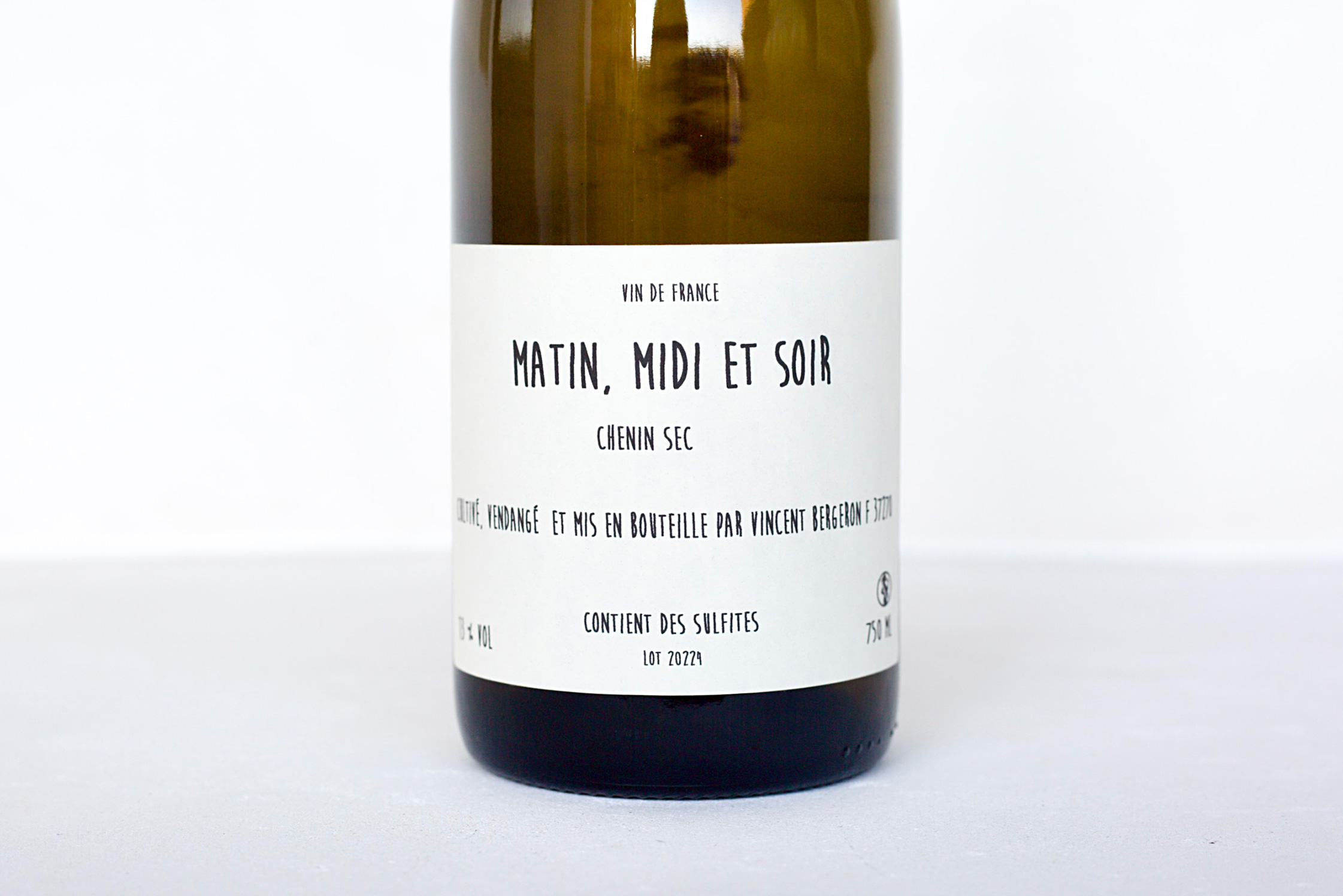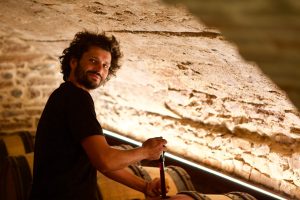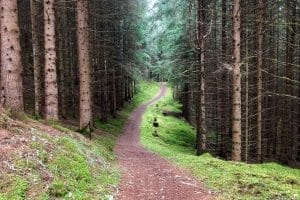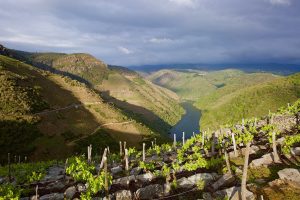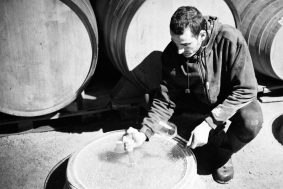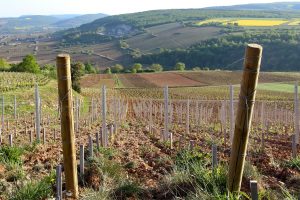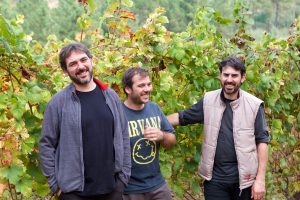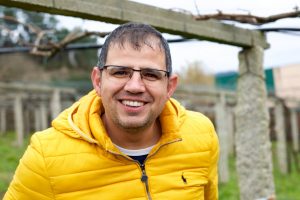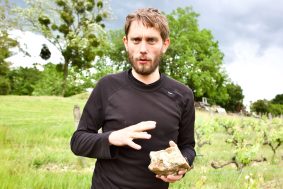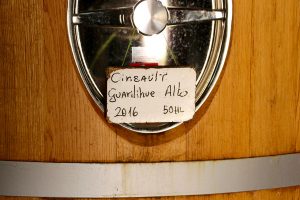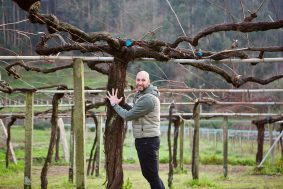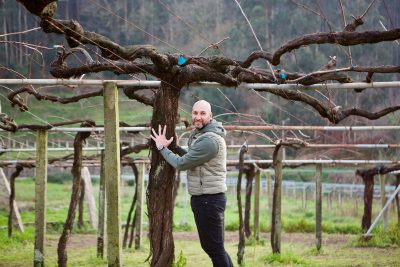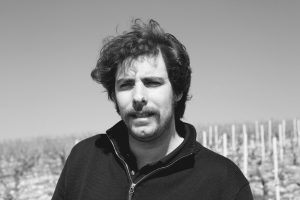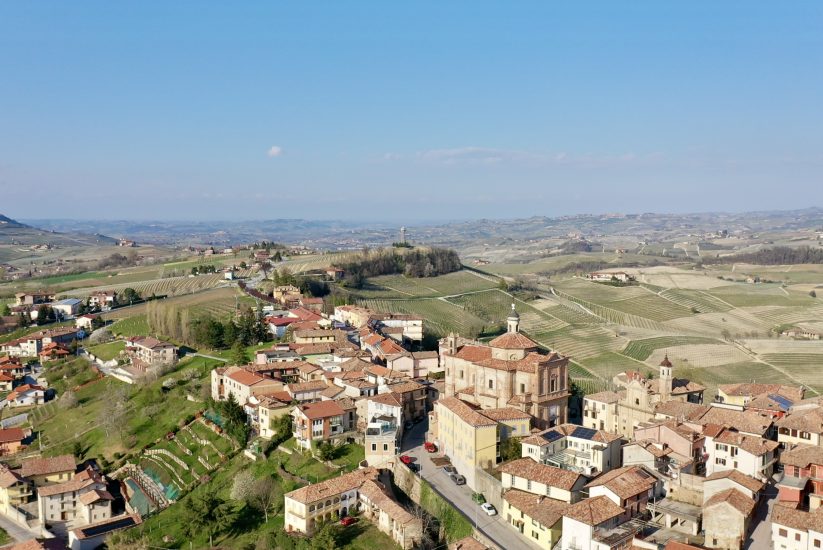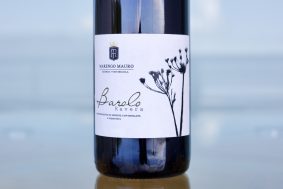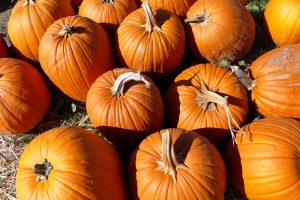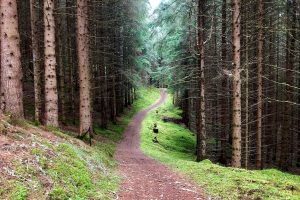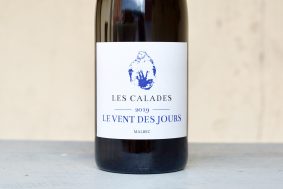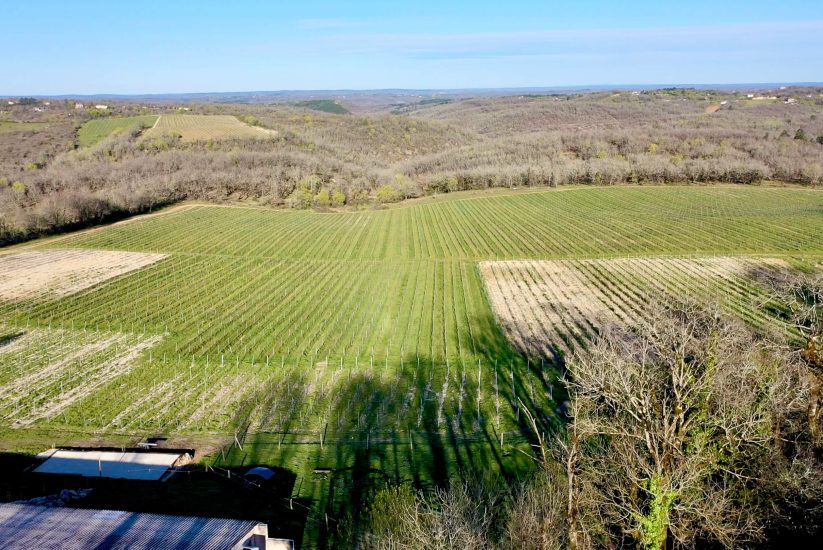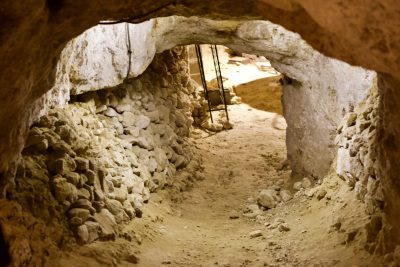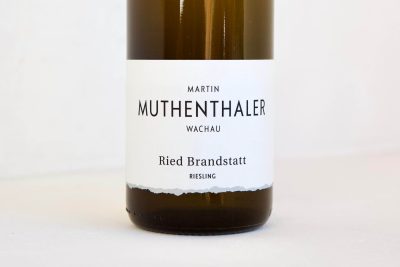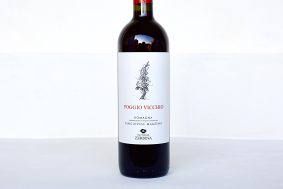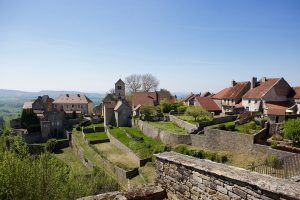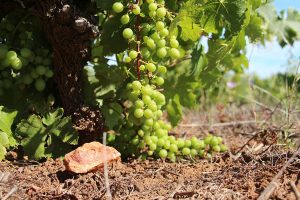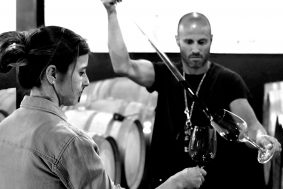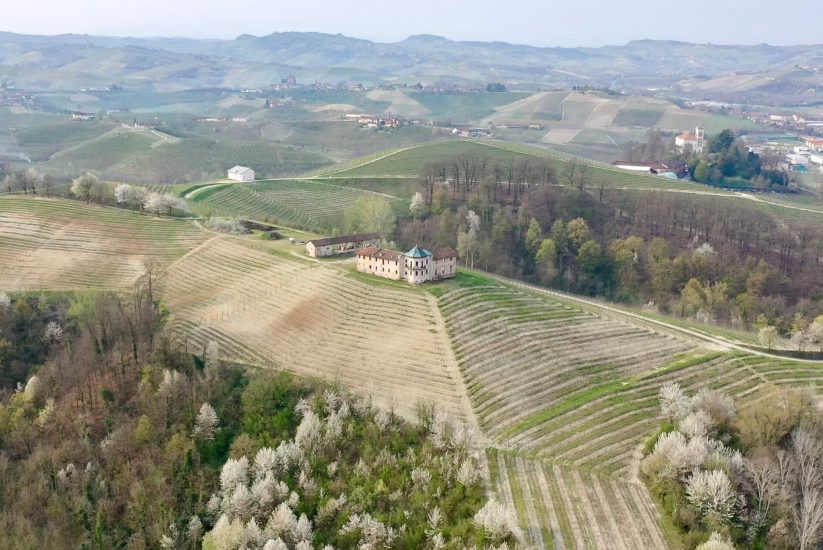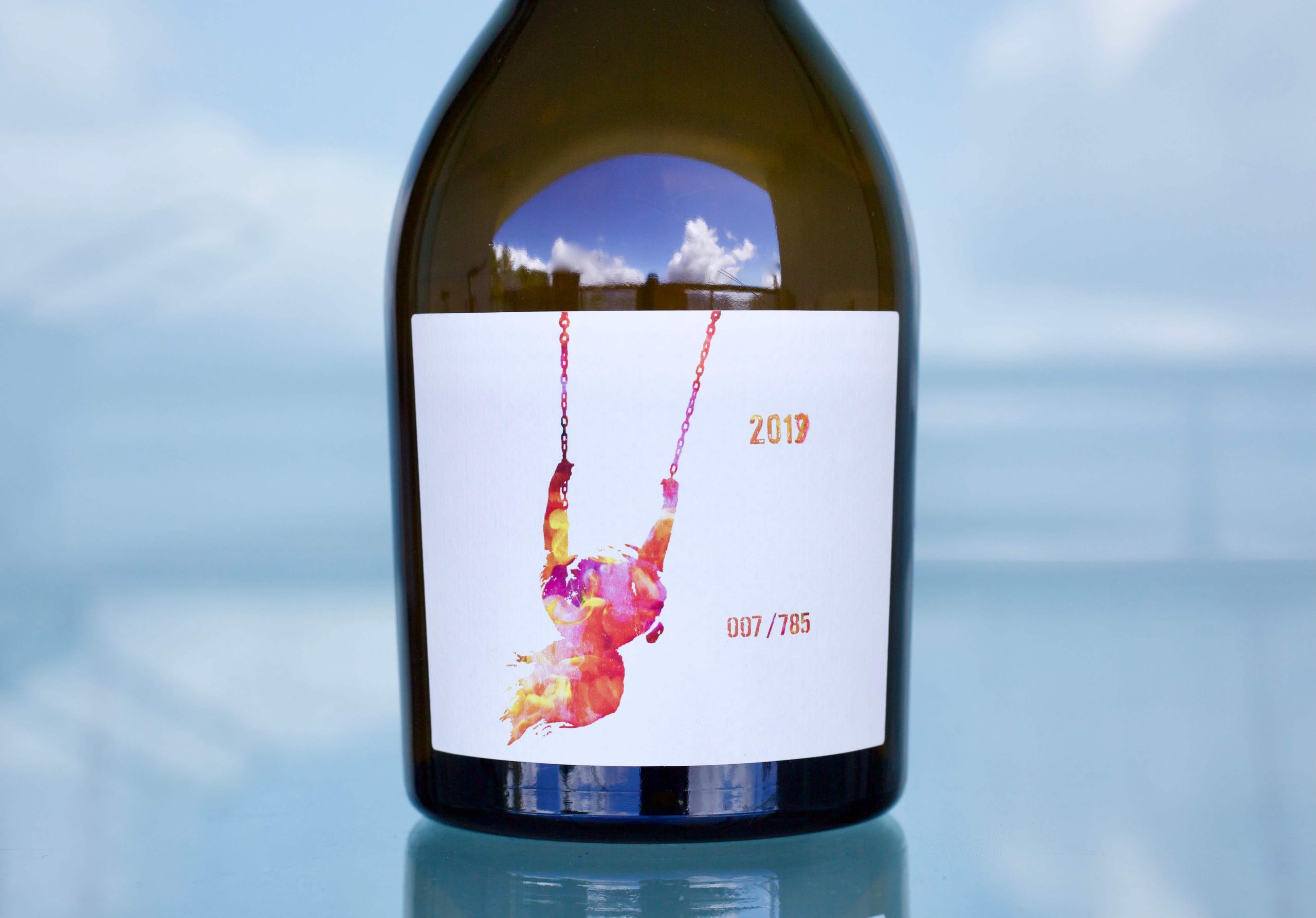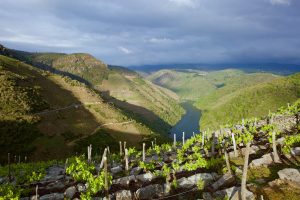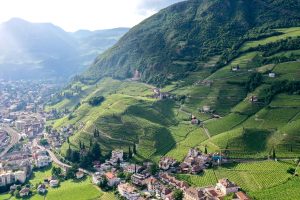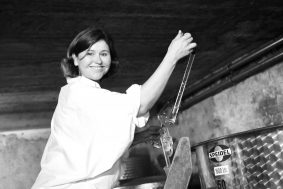(Download complete pdf here)
Colares, Portugal, March 2024
It seemed possible that winter wasn’t going to arrive. Dave Fletcher called from Barbaresco to confirm they weren’t alone in facing a sunny, dry, and unusually warm January. In Spain’s Costa Brava it was like fall had returned and even sometimes felt like a cool late-summer day; a hot, sunny spot protected from the wind on our terrace pushed this particular vitamin D-soaking lizard back inside after only ten minutes. People were at the beach, swimming. It rained less than usual in Portugal and one of my best friends and favorite winegrowers, Constantino Ramos, was enjoying the balmy temperatures but had the same concerns as every grower: the vines might fail to get enough of their much-needed winter hibernation, and could start pushing far too early. It cooled off and things slowed again in February but March temperatures picked back up. Growers in southern Portugal said bud break is even two weeks earlier than 2023, and that year was early too. The fourth weekend of March in Portugal’s Ponte de Lima (where we live) hit an unusually high 83°F. A few days later it plummeted to highs in the mid-fourties.
2024 holds the record for the warmest January in history. February got a little chillier, and winter arrived again for me on the bone-chilling London Stansted tarmac in near-freezing temperatures during a slow march to the terminal in face-stinging drizzle and hair-twisting winds of well over twenty miles per hour. Passengers on some planes were in for a white-knuckle, stomach-churning, face-blanching landing. I heard that the next day planes had to attempt numerous landings before they were successful.
Photo borrowed from tripadvisor.com
We came to London for a Spanish winegrower-tasting event called Viñateros. But our first stop was 10 Cases. Highly recommended for a casual but effective culinary experience, this bistro à vin was commandeered by the lovely Parisian-born, Émilie, and Matt, a youngish, lanky, long-haired, elegantly scruffy British wine-tender who floated in and out of the bar, sometimes drifted across the street, then outside on the bench for a smoke, maintaining at all times his devilishly inviting Bowie-like charm and smile.
With an endless supply of temptations on the list, we followed the food. For my wife, a one-bottle date for dinner and a single-glass date for lunch who always prefers the lowest alcohol options, the 2019 Prager Riesling Federspiel “Steinriegel” couldn’t have been a better choice to cover our diverse food choices. Minerally icy and wiry, the extra years in bottle from this top vintage provided the right richness and flesh for its naturally sinewy frame. The start was Cantabrian anchovies with bread and addictive salted Beillevaire Normandy butter, followed by duck rillette, beetroot salad, bacalao-cheek fish and chips (a clever play on a local favorite?), and caramelized sunchokes (delicious, though not worth the ensuing internal pressure for this eater, some hours later). Then we finished with a trout reminiscent of the Danube (though born of the Chalk River) with fried skin, which was perfect for a Wachau wine. Then we may or may not have had two back-to-back orders of eye-crossing chocolate delice to tie everything off.
Our first imported Portuguese wines from Quinta do Ameal arrived in California in 2012. Our maiden voyage to the verdant hills of Portugal’s granite-dominated Lima Valley and its fast-moving Atlantic weather—a daily Ridley Scott-like scene from dark and frightening deluge to enlightening solar explosion and warmth—enchanted us enough to move here in 2019 after a year in the beautiful and unforgettably chaotic Salerno and the Amalfi Coast. It took seven more years to land a second Portuguese grower, and before that we already had a good collection going in Galicia.
Today we import more than twenty-five growers from Iberia, and we’re just getting started. It’s only April and we recently made a lucky strike in the tiny, historic Colares, Portugal’s rare pie franco beachfront refuge. While there used to be 1,500 hectares of vines, there are now fewer than fifty, credited to Lisbon’s ever-expanding urban sprawl. (Beachfront property outside of Lisbon is far more valuable as real estate than vines!) Like Provence’s Palette, Colares produces mysteriously immortal and charming wines in what’s now considered a tiny appellation buttressed by a beautiful limestone city and limestone ridge, though it’s not as dramatic as Palette and Aix-en-Provence’s iconic Mont Sainte-Victoire. Two hours south of Colares and ten minutes east of the Atlantic there’s another genius we hope to work with. At the Simplesmente Vinho on the Douro in Porto, one would be hard-pressed to find wines more delicious. And maybe another grower in Dão! We’ll see. Exciting times in Portugal, nonetheless. And then there’s Spain.
Photo borrowed from sbnation.com
Our first Spanish wine arrived in 2017, but this short-lived Albariño affair led us to the humble luminary, Manuel (Chicho) Moldes. Chicho’s generosity and immediate friendship brought us deep into Spanish wine culture and an entirely new family of growers close to what would eventually be our new hometown on the border of Galicia.
Spain is on a different trajectory than its neighbor with which it shares one of the oldest national borders in the world—around 900 years now. Indeed, Portugal is moving, but only fast by Portuguese pacing. Thirty years ago, Spanish reds and Austria whites exploded on the scene. Twenty years ago, indigenous Italian wine started to capture a lot of real estate on fine wine restaurant lists and store shelves. However, it seems to be losing ground now, slowing to a Bolognese-bubbling simmer. At the same time, Germany’s dry Riesling revolution grabbed headlines. And a newer taste began to develop in Spain, spurred by the natural wine movement and fresher, lower-alcohol wines.
Spain may be progressing faster than the rest of the wine-producing countries in Europe. Indeed, France continues to evolve, but the French are not rediscovering old viticultural heritage at the pace of the Spanish. Rather, France continues more in its evolution with techniques, but mostly with already well-established viticulture land. Spain is nearly equal in scale, but they’re rebuilding a forgotten wine culture and nearly entire regions throughout the country. Their tumble into the dark times started like the rest of Europe with the 1800s nasty-boy mildew-twins, and led by phylloxera. Then it was time for a couple of World Wars, between which the Spanish had a Civil War that landed them with a thud under the dusty boot heel of a Francoist dictatorship that lasted forty years until his death in November 1975. Spain is only fifty years past this brutal moment (of many brutal and cruel moments in their history), and over thirty percent of today’s population there lived part of their lives under Franco. While other European countries were in full recovery mode after World War II, the dreams of the average Spaniard under Franco were kicked down the pitch. The answer in Spain during those times was not to work in vineyards but to go to the cities, breaking many of Spain’s historical wine links. Today it’s on an impressive rebound, and with extraordinary terroirs yet to be fully realized. Imagine if Côte-Rôtie and the rest of the Northern Rhône Valley were reignited only a decade or two ago. That’s what’s happening all over Iberia, from Douro to Dão, Galicia to Gredos, and one of the first nearly forgotten lands in Spain to strike it big, Catalonia’s Priorat.
Montserrat photos (above and below) borrowed from worldsbesthikes.com
(One of my Spanish teachers, Montserrat—a tough name to pronounce on first go for any Anglo-Saxon—explained that it was given to many Catalan women during the Franco dictatorship as a passive rebellion against Franco’s ban of català, Catalonia’s native tongue. The Santa Maria de Montserrat Abbey, just northwest of Barcelona on one of Europe’s most entrancing and singular conglomerate formations, Montserrat—directly translated as jagged mountain—resisted and continued to speak català throughout the dictatorship. They also gave shelter to political dissenters against Franco, for which many priests paid the ultimate price. When she was in school, there could be seven out of twenty girls named Montserrat. She jokes that the only Francos in all of Catalonia are the dogs no one likes.)
And while Portugal moved peacefully into democratic society more than a year before Spain, it is the Spanish that bolted out of their boxed-in apartments and stone houses with tiny windows to enjoy fellowship with friends in restaurants and threw their bikini tops on the sand—some also occasionally discarding their bottoms—and began to live like their freedom wasn’t going to last. Almost every restaurant, no matter how poor the food may be (though they always have a decent beer, if anything), is full of Spaniards, cañas on every table, paellas, pulpos, tortillas, and jamon, elements as necessary to them as the air they breathe.
I attribute part of Spain’s recent rise—and now Portugal’s—to how international wine has become a regular part of progressive restaurant and wine-store culture. Passionate local Spanish wine importers and influential winemakers travel, learn, and bring back the intellectual spoils to everyone at home. It’s astounding how fast some find new and interesting growers outside of their home country as fast as the rest of the world. And it’s equally impressive that they all know each other throughout the country, like a massive version of the enviable comradery of the tightly-knit Austrian wine community.
Spain’s interest in the outside world means open minds and exponential progress. Every progressive Spanish grower I know, and likely 95% of those at the Viñateros tasting in London, are not only acquainted with the boutique wines of Champagne, Burgundy, Jura, Rhône and Loire Valleys, Italy’s Barolo, Barbaresco and Etna, Portugal’s Dão and Douro, the Wachau and Mosel, they also know the great producers in those regions by name and frequent their wines as much as Spanish wine. Do you think many growers in the famous French and Italian wine regions know today’s greats of Spain, or Austria, or Portugal? But to be fair, there’s a lot to learn in their own respective country for the growers in France and Italy, and for every great Spanish grower, there are five French and three well-fed Italians.
Spain is in full explosion mode. Not only because of the growers themselves but also thanks to a series of importers (and critics) that preceded the arrival of The Source, by generations. Much is to be credited to those who forged a path into Iberia and encouraged growers to rediscover and rebuild. We can’t forget that Spain was under a dictatorship until 1975, and people were, and some remain, in a period of healing and recovery while others simply won’t make it out from under the weight of that past. And while we may pick sides with the style of wines we prefer, those Spanish importers during the ‘90s and aughts gave confidence to a country by reigniting their dreams of rebuilding their viticultural heritage. The Spaniards did it. The world noticed. And they were and are being rewarded. That brave generation set the stage for today’s generation to thrive.
One such importer of more than thirty years and part of this Spanish renaissance is Eric Solomon.
Initially cutting his teeth in France, Eric’s first imported Spanish wine was made from a globally unknown region at the time. That first wine that brought Eric to Spain was crafted by a Swiss-German born in Paris, Daphne Glorian, a dreamer who forged her first wine from seventeen terraces in one of the world’s most aesthetic and extreme environments. She called it Clos Erasmus, and she went on to become one of the most celebrated growers of Priorat and all of Spain. She and Eric married in 1997.
Though Eric’s first love was music, then French wine, he’s more known today in the US market for his influence with Spanish wine. Names Eric championed include growers from Priorat (Clos Erasmus, Terroir al Límit, among others), Sierra de Gredos (à la Commando G), Ribeira Sacra (Fedellos), Jerez (Luís Perez), among many others.
We know the strength of our Spanish range here at The Source is Galicia. Eric’s is the entire country. His wines bring a matured Spanish wine culture that has come about after the modernist age of extraction and without any natural wine boobytraps, rather a group of the country’s most progressive and talented growers. Our producers at The Source tend to play in the more tense and aromatically piercing, austere realm (except those from Castilla y Léon and Rioja). They’re sharp and lean toward brighter acidity for structural framing, and crunchy fruit and rocky terroirs for aromatic and textural strength. In my January snapshot at the London Viñateros tasting, I found that the dozen Indigo Wine Spanish growers are equally elegant but fuller. Perhaps they could be described as more classic, and on the stage of the world’s universally appealing superstars. They’re less austere yet strongly distinguished in palate texture with intendedly middle-amplitude acidity and they’re salty, the way we love them.
If I were to use a hillslope to chart the general feel and shape of wine with the sparer soils on the top and richest soils on the bottom, The Source profile tends to play in the upper section where some richness is exchanged for tension. Eric’s are in the center, the sweet spot for balanced fullness. Philosophically, Indigo Wine’s Spanish lot occupies that center space between modern movements of the last fifty years, where the hand in the cellar is measured, nothing of value is left to the pomace pile, and craft is never forsaken for dogma. Most practice organic and/or biodynamic farming. (Once I have more in-depth experiences with Indigo’s French wines, I’ll write about them.)
Indigo Wine’s Spanish collection represents today’s voice that evolved over the last fifty years of cultural rebirth and renaissance in one of the world’s most exciting wine-producing countries. This April, The Source will start to bring to California Eric’s small winegrower portfolio from France, Spain, and Switzerland. I am thrilled by the opportunity to learn from and work with Eric, who shares a common bond with us at The Source in that he also built his company from scratch. I am also excited for our team and our California wine community to benefit from his crew of deeply experienced former sommeliers and now longtime importing colleagues.
“People and places are the essence of what I do. Had I focused solely on monetary success, I would have retired years ago. When I add a new producer to my portfolio, the wines must say something unique about variety and place and something profound about the winemaker. Interesting people make interesting wines. They tend to work at the margins, rebel against convention, and doggedly follow their own path. They are thoughtful and hospitable, demanding and loyal, surprising and dependable. If I have to work harder to get attention for their efforts, I do this gladly because they're not just business partners but friends.
“Late last year, I met Ted Vance. The instant and easy rapport that developed might have been from shared experience. Ted was born and raised in Montana, and I grew up in small-town North Carolina, but we feel genuinely at home in Europe. While I have Daphne to ground me, Ted has Andrea. Fundamentally, we share a deep connection to the winemakers we represent and the relentless curiosity that led to their discovery. With Ted, I feel the same excitement and possibility as some of my most talented winemakers, and through our shared commitment to people and places, I couldn’t be more confident in my new partnership with Ted Vance and The Source in bringing my Indigo Wine portfolio to California.”
In London I was greeted by Eric and some of his team. I then surprised six of our Spanish growers, since they had no idea I was coming. I hadn’t seen them outside of the cellar and vineyard in events before (I avoid them like the plague), and they were bursting with enthusiasm. Our real purpose in going to London was to meet with Eric and taste the dozen or so of his growers that we would represent in California. Our small team of producers at the event made a strong showing among a carefully sorted high level of Spain’s top progressive producers in one small space. Eric’s range of Spanish wines was equally impressive and covered much more ground than our seven years of importing from the region. No surprise.
Ahead of time, I calibrated my palate with growers from our portfolio before tasting Eric’s—a practice I regularly do before and during tasting new prospects to gauge them better. Setting the bar, Manuel Moldes (aka Chicho) and Iago Garrido’s Augalevada wines both showed spectacularly. And while Iago never seems convinced by his reds over his whites, they blew my mind, again: indeed of the most compelling reds of the tasting for their uniqueness, beauty, and delineation of fine nuances; the new labels are great, too. Similarly, Chicho’s were just as good as we expected.
Manuel Moldes and Iago Garrido (Augalevada)
In Rías Baixas, there is some unspoken internal hierarchy in the wine community. I know part of it is out of respect for the region’s trailblazers (same as other Galician regions), and each other. But we outsiders have more freedom to express opinions: Chicho is at the top of the heap. I adore and drink the top Rías Baixas growers’ wines every year, and in fluidity, detail, and spherical harmony few match his complete body of work; certain wines in another range do, but few demonstrate the same across the board. Each wine he puts to bottle seems as though he’s bet his life on it. Part of his progress is that he’s one of the most well-tasted growers I know in all of Europe, and has a clear vision and the tools to achieve his objectives. Our first imported wines, 2018s, were already in the upper division. Today, however, even his entry-level, Afelio, is tough for any Albariño to beat on balance. His reds now also find the mid-palate flesh they were short on when we first started.
At the tasting was also Artuke, the most developed of the Rioja growers we represent. Arturo Miguel Blanco is well past the initial discovery phase and deep into the refinement of details. He’s middle-aged but has already achieved a certain level of mastery, similar to Chicho. But it’s the wines of the relative winegrowing newcomers from our portfolio at Viñateros that pleased me the most. The Rioja wines of José Gil and Javier Arizcuren, and Aseginolaza & Leunda’s Navarra range reached a new level. Javier’s reds were some of the most exhilarating in the whole tasting on full-flavored deliciousness, nuance and craft. An architect by trade (and famous for his designs in Rioja), in the last ten years he’s become an obsessive vineyard worker and cellar tinkerer, and his wines, many from recovered ancient vines at high altitudes, have found their voice. They went from a little loose but serious in the first wines with a bit much newer wood for my taste (sometimes necessary when increasing production with the desire to guarantee the hygiene of the wood in the cellar), to wine more sculpted by now more mature wood barrels, with intense joy and better-contained fullness. I tasted them after a few hours open, and the top of his range (wines we haven’t yet imported) delivered two of the best reds I tasted all day.
Now to wines that are actually arriving.
Wines arriving in California from Indigo Wine will be covered in greater detail in the marketplace with our sales team and support from Eric’s team, and sometimes Eric himself. The amount of knowledge Eric’s team has about their wines (and their similar fascination with geology’s relation to wine) and the most important wines of Europe is at the highest level of any importer. Many of the growers, as in the Jon-David Headrick Selections French roster, were sourced and are also managed directly by them. More on those producers to come.
At the tasting next to Javier Arizcuren was José Gil, who, interestingly enough, already works with Eric Solomon in the rest of the US market. José is on a seriously fast track, as if he was born to do this the way Messi was to play fútbol. While Javier’s Riojas hit the mark of contemporary classic, José’s are equally delicious but flash more x-factor, a wildness of that northern Rhône garrigue with its lavender and purple flowers, thyme and other parched high-desert herbs framing the fruit.
This year we’re getting a little more from José than usual, but only with his starter red. And with José awarded Tim Atkins’ 2021 “Young Winemaker of the Year,” and a big belief with big numbers to match from the Wine Advocate’s Luis Gutiérrez, it makes it even harder to parcel out his top wines. This leaves the range’s starter, 2021 Viñedos de San Vicente de la Sonsierra, the wine to focus on. It’s vinified and aged as the entire range with just short of a two-week fermentation (here about half stems included, all others destemmed), pumped over a couple times per day followed by a year in older 300-500L French oak barrels with sulfites only added at bottling. It’s 80% Tempranillo co-planted on large terraces between 1932-2017 with Garnacha Tinto and Blanco, and Viura, exposed in many directions on shallow calcareous sandstone bedrock and calcareous silt and sand topsoil at 510-620m. If you don’t try his top wines next to this one, you might think it’s one of them.
The other 2021s are so small in quantity, it’s too much of a tease for a big presentation. Arriving are the elegant Viñedos En Labastida, a blend of 85% Tempranillo, 10% Garnacha, and 5% Viura from Labastida, a neighboring commune to Sonsierra; the potent and equally fine Parcela La Conoca from a 0.5-hectárea Tempranillo (and a little Viura) on the easternmost area of San Vicente de la Sonsierra Valley planted in 1967 on a northwest-exposed terrace of deep calcareous silt and clay topsoil on calcareous sandstone bedrock at 560m; Parcela El Bardallo, a big-flavored Tempranillo co-planted with a little Viura, exposed northwest on sandstone and limestone with calcareous silt and sand topsoil at 540m. What some consider the most complete wine in the range, Parcela La Cancova “Camino de Ribas” comes from the Concova vineyard with Tempranillo (~60%), Garnacha Tinto (~40%) and a minuscule amount of Garnacha Blanca and Viura planted between 1892-2017 on northeast-facing calcareous bedrock with shallow sandy topsoil at 610 m.
José’s parcela wines are extremely limited but a lucky few might be able to grab some. Don’t hesitate to ask. We will do our best to accommodate.
While Javier and José are hitting big on the Rioja scene, Basque natives and environmental biologists by education and trade, Jon Aseginolaza and Pedro Leunda, are no longer quietly grabbing attention for their appellation-revitalizations in Navarra. Their wines in London sent a message as they pursue elegance over power and have made directional choices to either play on the lighter side with each specific cuvée or sometimes with a grander tune.
What I like most about their choices is that they highlight Navarra as an undervalued and underutilized multi-talent with the possibility to create refined beasts and ethereal beauties from the same ancient and nearly forgotten Garnacha vines. From one vineyard on the south side to another could be more than an hour’s drive, they play in Navarra with Garnacha like Sonoma winemakers source Pinot Noir and Chardonnay from many corners of county. There are countless changes in terrain and climate as one moves across the appellation, especially in the north, passing through the desert and closer to the Bay of Biscay.
Jon and Pedro
Before we jump into the reds, I want to acknowledge that I made a mistake by not importing the new vintage of their white, Txuria. This old-vine Viura was absolutely one of the most compelling whites tasted in London. They found a great path and I hope they continue to follow it so we can get some next year—a perfect balance of reduction, finely etched framing and gorgeous, sharpening stone texture. Beautiful!
What’s landing now are the reds that play more in the ethereal, high-toned domain than the darker, earthy, beast realm. All are in the 13.5% range, which is no easy task in today’s Navarra with its long, hot summer days, especially with ancient Garnacha vines whose grapes mature faster than the younger ones.
The most ethereal and freshest of the bunch is from the sole young-vine wine in the range, Kauten. 50% whole clusters from 15-year-old Garnacha vines, soft-touch extraction, and five months in old French wood forged a gorgeously lifted, bright red-fruited aromatic wine with elegant graphite-like textures and sappy back palate finish. If there ever was a poundable Navarra red with serious quality trimming, this is it.
The 100% whole-bunch, x-factor-heavy Matsanko is bright for a Tempranillo-dominated wine. More purple than red, it emits fragrant lavender with wild purple thyme blossoms and dark green leaves. The remaining blend of 10% Garnacha and 5% Viura adds to the already lightness of this wine from old, resurrected, dry-farmed bush vines grown on rocky calcareous clay soils at 410-490 meters. Taken from the same vineyard sources, is Cuvée, one of their principal blended wines loosely composed of 75% Garnacha, 20% Mazuelo (Cariñena), and 5% Tempranillo. It’s assertive, with the Mazuelo shouldering its way to the forefront with sweet sugarplum, black raspberry and exotic Persian mulberry.
I don’t know how he does it, but give Pablo Soldavini a box of vitis vinifera grapes from anywhere and prepare yourself for a miracle. He started making wine in 2010, but it seems like he was born into it.
Ollo de Sapo (Eye of the Toad), one of the famous gneiss rocks of Ribeira Sacra
Pablo grew up in Argentina, a seven-hour drive south of Buenos Aires. He attended university for graphic design but it wasn’t for him. Instead, he hit the road. First France, then England, and into Castro Caldelas, a medieval town with a castle in the heart of Galicia’s Ribeira Sacra. It’s the birthplace of his grandfather who emigrated to Argentina in the 1930s—a fortunate move considering what was in store for Spain shortly thereafter. What was originally just a return to Pablo’s ancestral background spurred a romantic interest in wine that turned into his calling. Fully committed to his objectives, putting all his money into only smoke, drink, food, and his vineyards and cellar, today he lives humbly, like a forty-something-year-old overactive hermit, high up in the Ribeira Sacra in a desolate and largely empty town full of rundown houses and a church and cemetery in almost complete disrepair. His only full-time companion in his tiny ramshackle wood house atop a tiny rock-walled cellar is his cat.
Bank funding in hand, last year Pablo began to build a new winery across the street in preparation for production from some old vineyards he’s worked back to health—very few of them Mencía vines, rather more historical indigenous varieties if one could even say such a thing; centuries-adapted-cultivars? And after being dragged around the last decade starting with the 2013 co-founding to his ultimate departure in 2018 from the now famous Ribeira Sacra producer, Fedellos do Couto, followed by a consultation gig for a misguided heavy metal rocker in Ribeira Sacra’s Amandi who bet his wine economics on a tree swing, and then Adega Saíñas in Riberas do Sil, Pablo has found his footing. The results are as good as expected, and the once-underutilized talent of Pablo Soldavini is no more.
Fidgety, often overly anxious, he has irresistible cravings for smoke and drink and carne (he loves four-legged and winged animals but isn’t a fan of seafood—both Argentine cultural heritages, at least from his generation). With his perpetually vigneron-stained hands and whole-bunch-rarely-destemmed grooming, he’s mostly Dr. Jekyll and rarely Mr. Hyde. The man is generous and friendly and can’t sit still in the company of others—maybe not even when alone. But who can say?
Two of the four wines this season from Pablo arrived in March and should be rested enough to give them a swirl in the marketplace in April. The two that come later are new: A Besta, the beast, a blend of mostly whole-cluster Sousón and Brancellao, and Lurpia, which means harpy (an inside joke that belies this beautiful wine), a pure, whole-cluster Brancellao with intoxicating qualities. They arrive this summer. I’ve already polished off numerous bottles of each but need to slow down or I’ll run out too soon.
(2022) O Branco isn’t technically vintage-dated but rather is coded on the back label. It’s harvested from 80-year-old Albariño vines in the Rías Baixas subzone, Salnés, from a flat plot of granite bedrock and deep granite topsoil. It’s naturally fermented and aged for eight months in old 300 and 500-liter French oak. Unfiltered and unfined, it’s a sharp but full-bodied wine made in an atypical fashion compared to most Rías Baixas Albariños. The minuscule amount of sulfites is added only before bottling, lending a view into a more sulfur-free élevage from the heartland of Albariño. Critic and strong advocate of all the wines Pablo has touched over the years, Luis Gutiérrez describes the 2021 perfectly as having a “reductive and leesy nose,” and says it’s “austerity in a bottle.” There is fruit tucked in there, but it’s tertiary. The 2022 vintage carries the same feel but there’s more stuffing and flesh—a good step up.
Not labeled for its appellation nor vintage, the (2022) Simple is a field blend of 30-80-year-old vines of Mencía, Garnacha Tintorera, Mouratón, Godello (white) and many other varieties grown in the subzone Ribeiras do Sil with many expositions on steep slopes of gneiss bedrock and sandy and loam topsoil at 400-500m. Naturally fermented with 50% whole clusters and infusion extraction for a week and then aged in steel, it’s also unfiltered and unfined. It may seem simple at the start, but layer after layer emerges when given time to properly open. 2021 was difficult due to the cold year and problems with mildew. Like O Branco, the 2022 is much fuller and giving on fruit.
Spain’s Michelin-starred restaurant count is just short of two hundred and fifty, with thirteen holding three stars. And while its total is only a little more than a third of France’s and more than half of Japan’s, it still has more than the US, despite having only 15% of the population of The States. Germany and Italy are the only other countries to have more than Spain, and both have many millions more people.
Michelin-starred restaurants haven’t always been a big deal for Spain (after all, it’s a French concept), but one Catalan trailblazing restaurant that’s now a museum, elBulli, led by the Ferran and Albert Adrià, changed the face of Spain’s global restaurant position and was the first one fully committed dive into molecular gastronomy, worldwide. While Michelin-starred restaurants don’t have much pull in the US over the market’s fine wine interests, they remain the primary measuring stick for Spain’s growers and their achievements. Real estate on lists for these limited-seat restaurants is hard to get (except for wines with built-in investment value), especially with Spain’s embrace of international wines more than most other major European wine-producing countries. To make the cut, you must already have the world’s attention, or you must be doing something unique and at a high level. Pedro Méndez doesn’t yet have the world’s attention, but he’s well represented in Spain’s top culinary destinations, including dozens of Michelin-starred spots throughout the country, including País Vasco’s three-star Arzak, an institution that landed its first star in 1974.
Pedro’s breakthrough into Spain’s top spots started with his reds—50-70-year-old Mencía and Caíño Tinto vines, with the former a peculiar variety for the appellation, especially with its enviable vine age. With just over 1000 bottles produced of each of the two reds, more than half of them are sold to Spanish Michelin-starred restaurants, and most of the rest to top local restaurants. This says something, no? We’re lucky to import a quarter of Pedro’s production of reds along with a quarter of his micro-production, ancient-vine Albariños. It’s not much wine, but we’ll take them.
I understand Pedro’s wines’ place in Michelin restaurants. Both red and white perform extraordinarily well with more time open (one micro-dose of oxygen every ten or fifteen minutes makes them sing after an hour), but the reds glide with light textures with unique finesse and balance of mineral, metal, tea notes, soft fruits, and salivating salty oceanic freshness. After a few hours, they’re gorgeously refined and attractive. On the second day, they feel like they’re still on their first hour. They’re also an adventure for most of us into the unknown.
The aromatically powerful and classic Galician Atlantic red, Viruxe is entirely Mencía from a single vintage, while the more refined but edgy Xuntanza, is a blend of Mencía and Caíño Tinto, from two vintages… I never thought a still wine blend of two different vintages would interest me, let alone result in such a compelling wine. But it did, and I’m more than ok with it. It’s the wine’s magic. Both come from a granite sand vineyard in Meaño four kilometers from the ocean. Both are whole-bunch fermented for 20 days in steel and aged nine months in old barrels. Neither are fined or filtered.
On first taste, the 2021 Viruxe delivers classic Rías Baixas red wine aromas of chestnut, austere red fruits, pomegranate, sour cherry, bay leaf, and pungent mineral and metal notes. Because of its strong natural snap, I wouldn’t guess it to be 100% Mencía in a blind tasting. (I admit I struggle with Mencía, though Pedro’s is like a ray of light for me. I find a lot of the top examples overrated. In places like Ribeira Sacra, for example, most other indigenous/historic varieties, or combinations of them, would make a more compelling wine on the same dirt. However, there are a lot of great old-vine Mencía around that should live out their days of production before replanting.)
Viruxe, which means “fresh wind,” is aromatically intense but deceptive, as the palate delivers the variety’s naturally gentle touch. Equally gulpable as it is intellectually stimulating, Viruxe alone presents a compelling argument for Mencía as a reasonable Rías Baixas red grape alternative to some of the more aggressive reds of the commune. It lacks naturally high acidity and is usually acidified or blended with other grapes endowed with massive acidity, like Caíño. But here it doesn’t need the unnatural boost or the blend, especially when harvested from such old vines grown on granite and a finishing alcohol of 11%. In Rías Baixas, this is perhaps the least ornery and easiest, pleasure-filled, aromatic and serious red I’ve had from Salnés. Indeed, others deliver a worthwhile experience and are extremely well made, like those of Manuel Moldes, but few are so inviting and gentle as Pedro’s. In a side-by-side two-day comparison next to Xuntanza, it doesn’t evolve as much with time open but after more than a half hour of micro-pours, it finds its footing and lifts off.
Probably like you, I haven’t put much serious contemplation into mixed-vintage still wines, nor have I wanted to. But Pedro’s choice was clever because the result is a beautiful Salnés Valley red. I’m starting to notice mixed-vintage blends more now, but perhaps they’ve been around more than I thought. Xuntanza, meaning “union,” is a blend of equal parts 2020 Caíño Tinto and 2021 Mencía. Initially, it shares the same aromatic profile as Viruxe, except that it’s mellower and less effusive, more analog if Viruxe is a little more digital. The palate is more stern and tense (Caíño effect) but finishes with salivating mineral strength in the front palate and a suave back palate despite its Caíño-charged acidity. Like many wines with upfront acidity, the first glass seems like a different wine than the second. Its aromatic austerity softens quickly and makes way for more spice, orange peel, pomegranate, and rhubarb. With each swirl flows more delicate aromas while the palate continues with sharp textures and a slight sting but finishes gently. Half an hour in, it softens and begins to ripple like a crystal-clear lake disturbed by the first drops of rain.
Pedro’s Albariño collection is from the Salnés Valley hamlet, Meaño. If I were to draw a comparison to Pedro’s wines and our other growers in Rías Baixas, I’d say they’re more powerful than those of Manuel Moldes and, perhaps of equal power to Xesteiriña, but are more contained and classically styled than the latter. Pedro’s Albariños have broad shoulders, a compact core and megathrust. This may be partly due to the older average vine age of his many parcels, and, in some cases, deeper topsoil. Moldes’ cru Albariños are on schist, with his Afelio on the mostly granite. Xesteiriña harvests from a single plot of extremely hard metamorphic rock with almost no topsoil. The bedrock is somewhere between medium- to high-grade metamorphic rock: some looks like gneiss while others look like schist. Xesteiriña’s rock type is probably the rarest of all in Salnés with vineyards planted.
Each of Pedro's cuvées are staggered releases based on their more optimal drinking window. The eponymous label, “Pedro Mendez,” is the earliest, along with the previous season’s As Abeleiras, and the year before that one, Tresvellas. All three vintages arriving, 2020, 2021, and 2022, are stellar Albariño years, which makes this trio particularly exciting. None of Pedro’s wines conform to the appellation Rías Baixas, therefore none bear the vintage date or grape name (though coded at the bottom as a Lot). These two non-conforming label elements are common in Galicia.
Formerly labeled as Sen Etiqueta, the (2022) Pedro Mendez “Viño Branco do Val” (Albariño) lays down the gauntlet as the first wine to taste in the three together. It’s so delicious on the first take, that it’s hard to want to move on. It reminds me of Arnaud Lambert’s Saumur “Midi” with its power over your ability to restrain and drink slowly. It captures the elegance of sandy granite soils, salty ocean breeze rim, sweet Meyer lemon, sweetened juicy lime, honeysuckle, and agave—like a wine margherita (my Achilles’ heel of cocktails, which I rarely partake in nowadays). Forget the oysters and jump straight into salty clams, sweet Santa Barbara ridgeback prawns, and spiny lobster. Though dry, the sweet elements and effusive aromas bring great lift to this fluid and undeniably delicious wine. It’s a firecracker of a starter.
The (2021) As Abeleiras “Viño branco de parcela” (Albariño) is released a year after the entry-level Albariño and comes from a single parcela planted in 1993 by a very young Pedro and his father. It sits at 100 meters altitude, also on granite soil. While the 2019 version was raised in steel, this year spent time in old French oak barrels. (2020 wasn’t up to Pedro’s standard, so it wasn’t bottled alone.) While the other two Albariños have a broad band of expressions and roundness due to the diversity of the many vineyard parcels in each wine, this single vineyard’s uniqueness offers a more vertical than horizontal experience. While the other two would be great for a bigger party of people because they jump into the mosh pit and start knocking people out on the first swing, As Abeleiras is initially more snug and better suited for a two-person tango. While the others are wonderful in their way, this is the thinker, the wine to observe and admire for its singularity, focused austerity, and tight, chalky and grippy texture. It’s a minerally beam of light. The others are mineral bombs.
I first tasted (2020) Tresvellas “Viño Branco de Viñedos Históricos” (Albariño) in Pedro’s arctic-cold cellar on a rainy and freezing November day. It was almost impossible to warm up and to break the ice shell on the wine. Cold Albariño, no matter how good, doesn’t pair well with a runny nose, numb face, and icy fingers and toes. But in the comfort of my apartment overlooking the Lima Valley on a sunny winterish day in March, it’s different; I’m different. This wine is a gorgeous beast! And when you see the vines it springs from, you know the description is apt. They’re small trees! Their average age is well over a hundred years, and you feel it in the wine. With concentration, depth, and restraint, the warm and well-worked Tresvellas (Three Old Ladies) fills the glass. All the varietal’s classic high-toned lemony notes went to full preserves: sweet, salty, acidic, zest oil and the right amount of bitter pith. The color is between straw and gold leaf, and it tastes expensive.
The three tree groves sit at 10, 50 and 130 meters altitude in Meaño on granite bedrock and granite sand and gravel on wide, relatively flat terraces. (In these parts, extreme slopes are less important than other viticultural areas with clay or limestone because water passes through granite soils quickly.) And, Meaño has a lot of the earliest part of the day out of the summer sun because it’s tucked down in a little valley with the highest parts on the south and southeast of the vines. It’s also protected in the north from the wind, which gives that extra body pump in an already naturally pumped wine. In the cellar, it’s naturally fermented and aged in old French oak until the next season’s wine is ready to go into the same barrel.
